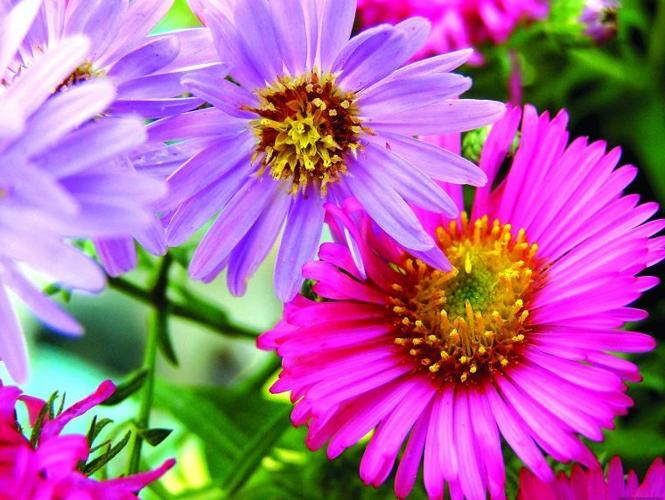Perennials provide what every gardener wants: color and low maintenance. Plus, they’re the plants that keep on giving. Perennials grow back year after year. They also divide and multiply over time, giving gardeners more bang for their buck.
Plant a dozen daylilies and within a few summers you’ll have enough plants to share with friends. Same with primroses, astilbe and shasta daisies. Shade or sun dictates what varieties to plant. Old-fashioned bleeding heart, monkshood, and hosta grow well in shady areas. Sunny garden spots are perfect for, black-eyed susans, purple coneflowers, salvia and bee balm.
Plants are labeled according to the temperature zones in which they thrive. Most areas of Waterbury, Stowe, and Morristown are in zones 3 and 4.
Perennials are popular at Evergreen Gardens in Waterbury, according to Carol MacLeod who owns the nursery with her husband, Mike.
Best-selling varieties include echinacea, daylilies, hosta, and rozanne geraniums, which have single blue flowers that bloom all summer.
“If deer are hungry enough, they’ll eat anything,” but some perennials are less likely to be eaten than others, MacLeod said.
Gardeners who live in wooded areas often want deer-resistant plants. Deer-resistant varieties include lavender, geraniums, and heuchera. Perennials tend to be hardy, making them ideal for first-time gardeners.
“They’re pretty easy and pretty tough,” MacLeod said. “You put them in and they go.”
Perennial Pleasures, a nursery and tea garden in East Hardwick, specializes in field-grown perennials hardy enough to thrive in northern Vermont.
Rachel Kane established the nursery in 1980 to collect and grow heirloom flowering plants and herbs. While this remains the nursery’s specialty, it also grows a number of perennials of more recent vintages including one of the largest collections of phlox in the U.S. Planting perennials provides an easy way to expand your garden over time without much effort, Kane said.
“You get more and sometimes you get too much,” Kane said. “That’s what neighbors are for — giving your extras away.”
Perennials can be planted or moved from one area of a garden to another at any time as long as they are well tended, Kane said.
“I move stuff around whenever I have the time,” Kane said. “The plants aren’t always crazy about it, but they usually make it.”
It’s a good idea to mix some annuals with your perennials or leave some areas of your perennial garden unplanted so you can introduce new varieties and colors each year, Kane said.
“Annuals flower well in high summer and late summer and a lot of perennials are slowing down at that point so it’s a good way to keep color and fresh blooms in the garden,” Kane said.
Kane suggests gardeners plant perennials that bloom during different times of the summer to keep their gardens vibrant throughout the growing season.
“Hellebore is the first to bloom, usually a few weeks after snow melts,” Kane said. “It has very long-lasting flowers that can hold for four weeks through May. Asters are generally last, blooming in September and October.”
Kane recommends everyone plant some asters because they attract bees and monarch butterflies.
Sources: www.hgtv.com, www.bhg.com.






















(0) comments
Welcome to the discussion.
Log In
Keep it clean. Please avoid obscene, vulgar, lewd, racist or sexual language.
PLEASE TURN OFF YOUR CAPS LOCK.
Don't threaten. Threats of harming another person will not be tolerated.
Be truthful. Don't knowingly lie about anyone or anything.
Be nice. No racism, sexism or any sort of -ism that is degrading to another person.
Be proactive. Use the "Report" link on each comment to let us know of abusive posts.
Share with us. We'd love to hear eyewitness accounts, the history behind an article.